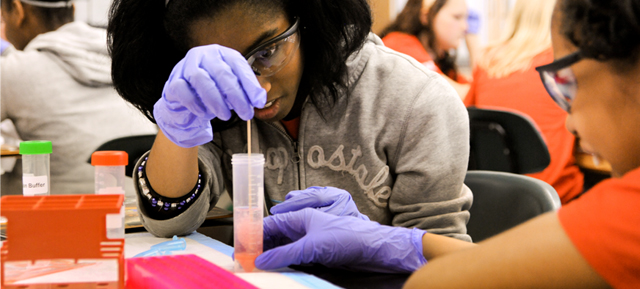Humane genomics education can reduce racism
By Brian M. Donovan, Monica Weindling, Jamie Amemiya, Brae Salazar, Dennis Lee, Awais Syed, Molly Stuhlsatz, and Jeffrey Snowden,
Science
| 02. 22. 2024
For as long as the concept of race has existed, racial prejudice has been justified on hereditary grounds (1, 2). Justifications of prejudice often misappropriate the work of Mendel, who first expounded a scientific model of inheritance by breeding peas (3). Today, our understanding of inheritance has moved far beyond Mendel, and insights from genomics refute the prejudiced idea that racial inequality is determined by genes (1). Even so, many believe that inequality is genetic because they are biased by an inaccurate conception of race called “genetic essentialism” (1, 2, 4). We present data from a randomized trial to argue that if teachers move genetics instruction beyond Mendel and toward more complex genomics concepts—what we call “humane genomics education”—they can protect students from believing in unscientific notions of genetic essentialism and support their scientifically accurate understanding of race as a social construction.
Genetic essentialism is a form of psychological essentialism, which is an early-developing bias in humans (4). Psychological essentialism is observable across human cultures and refers...
Related Articles
By Josie Ensor, The Times | 12.09.2025
A fertility start-up that promises to screen embryos to give would-be parents their “best baby” has come under fire for a “misuse of science”.
Nucleus Genomics describes its mission as “IVF for genetic optimisation”, offering advanced embryo testing that allows...
By Hannah Devlin, The Guardian | 12.06.2025
Couples undergoing IVF in the UK are exploiting an apparent legal loophole to rank their embryos based on genetic predictions of IQ, height and health, the Guardian has learned.
The controversial screening technique, which scores embryos based on their DNA...
By Frankie Fattorini, Pharmaceutical Technology | 12.02.2025
Próspera, a charter city on Roatán island in Honduras, hosts two biotechs working to combat ageing through gene therapy, as the organisation behind the city advertises its “flexible” regulatory jurisdiction to attract more developers.
In 2021, Minicircle set up a...
By Vardit Ravitsky, The Hastings Center | 12.04.2025
Embryo testing is advancing fast—but how far is too far? How and where do we draw the line between preventing disease and selecting for “desirable” traits? What are the ethical implications for parents, children, clinicians, and society at large? These...




